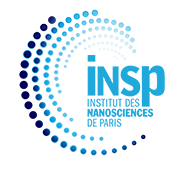Design Rules for Efficient Metallic Mid Infrared Transparent Electrode Dedicated to Nanocrystal-based Devices
Résumé
Colloidal nanocrystals are becoming an increasingly viable alternative to epitaxially grown semiconductors for infrared optoelectronics. Nanocrystal-based imagers have reached a commercial status in the short-wave infrared, while the midwave infrared (3–5 μm) appears as a promising playground. Beyond the evident requirement to grow less confined particles, the design of the sensor architecture for colloidal materials requires a complete overhaul compared to their visible and near-infrared counterparts. Here, we focus on designing transparent conductive electrodes in a spectral range where transparent conductive oxides become inefficient. We propose an optimized design of a metallic multiresonant grating that allows a strong spatial overlap between the confined electromagnetic field and the built-in electrostatic field from a diode stack, thus simultaneously enhancing light absorption and charge collection. The device is then expanded to a 2D metasurface to prevent a polarization dependence for maximized light absorption. Finally, we explore the lateral size downscaling of this type of resonator and show its behavior when the size matches the pixel size of infrared focal plane arrays.
| Origine | Fichiers produits par l'(les) auteur(s) |
|---|

